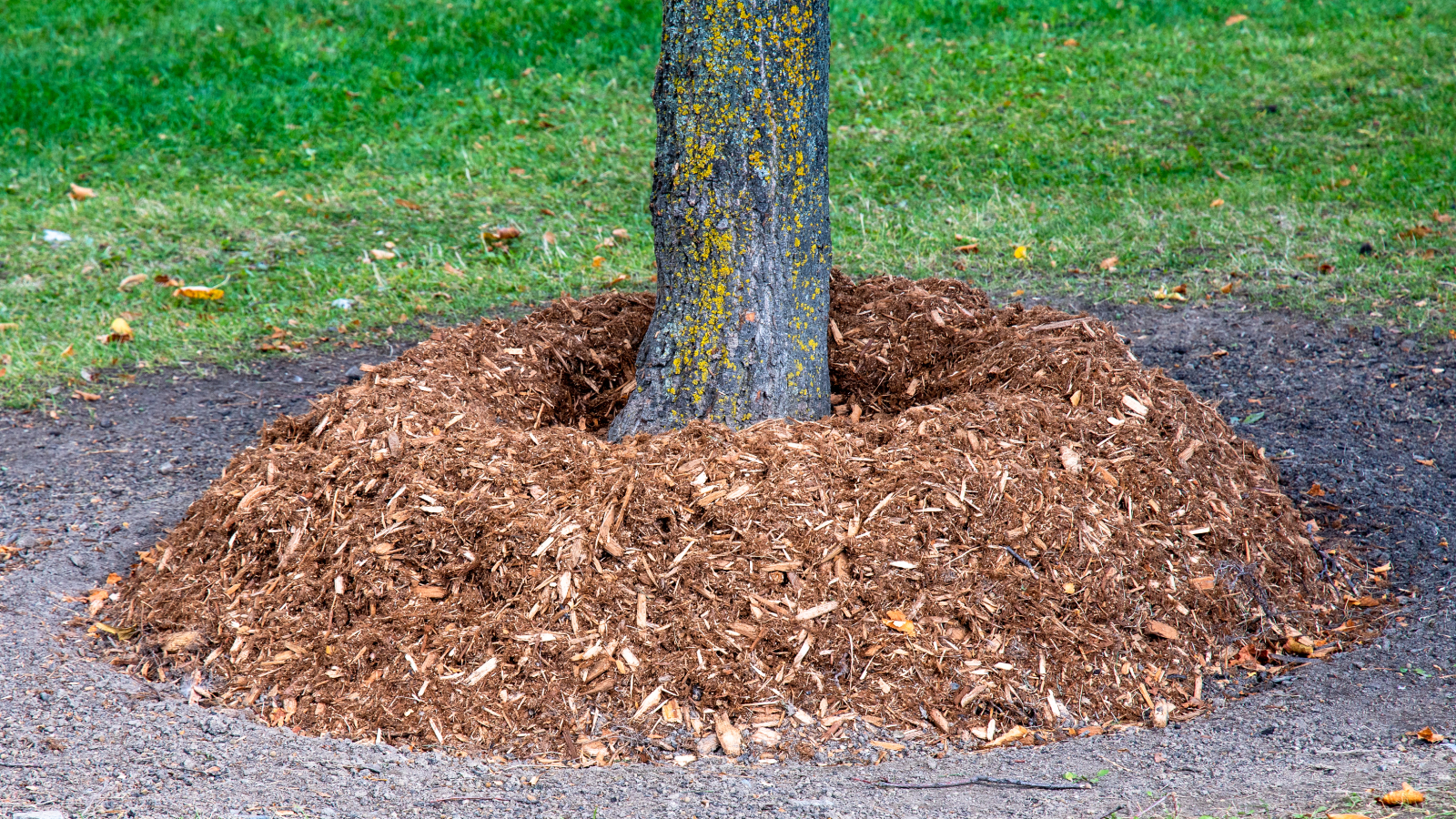Too Mulch Of A Good Thing: How Much Mulch Is Too Much?
Too much mulch can be detrimental to your plants and trees. Learn about how to avoid over-mulching and how much mulch you really need.


The benefits of mulch are so well known that the question is no longer “Should I use mulch?” but rather “How much mulch should I use?” This is a valid inquiry, since using too much mulch can hurt trees and plants. But how much mulch is too much? Can too much mulch kill a tree? Read on for information on the disadvantages of over-mulching
How Much Mulch Is Too Much?
Almost every article about mulch extols its virtues and there are more than a few. A layer of organic mulch not only keeps down weeds and locks in moisture, it also insulates the ground from cold and hot weather. Finally, it disintegrates into the soil providing both nutrients and organic content.
But too much mulch around trees or too much mulch in flower beds can create serious problems. A thick layer of much can smother small plants and even trees. The amount that will be detrimental depends on the plant.
In warmer climates, too much mulch can prevent a plant from experiencing a hardening off process that prepares them for winter.
The Dangers of Mulch Volcanoes
One detrimental practice in applying mulch is descriptively termed “mulch volcanoes.” This is when the gardener piles mulch up against the trunks of trees and shrubs in a pyramid shape.
This is always bad since mulch holds in moisture. That means that the bark beneath the mulch is constantly moist. The practice results in decay to the tree or shrub and can also provide a point for diseases and pests to enter.
This can be easily solved, however. Never pile mulch up against the trunk or stem of a plant. Rather, keep it back by at least 3 inches (7.6 cm).
Sign up for the Gardening Know How newsletter today and receive a free copy of our e-book "How to Grow Delicious Tomatoes".
How Too Much Mulch Can Harm Plants
Excess mulch can smother plants in a number of ways in addition to the damage done by mulch volcanoes. For example, if plant roots grow into thick mulch when it is wet, they will die once it dries out.
Likewise, too thick a layer of mulch can deprive a plant of water if the gardener only waters lightly, since water may not penetrate beyond the mulch. And deep mulch can cause roots seeking oxygen to circle around in the mulch and girdle the tree or shrub.
Another disadvantage is mulch's tendency to attract rodents. Too much mulch makes an excellent hiding place for voles or other rodents that gnaw on the shrub bark. It provides a hiding place for voles, a rodent that gnaws on bark, and girdles trunks and the lower stems on shrubs.
Proper Mulch Depth
There are several depth rules for mulch that are useful to keep in mind. First, never apply more than 2 or 3 inches (5 or 7.6 cm) of organic mulch to any plant. Spread it to the tree line, no further out.
Second, when a plant has shallow roots, apply even less, perhaps 1 inch (2.5 cm) or so. This applies to shallow-rooted shrubs too, like boxwood. One exception is dry leaves, which decompose rapidly and can be piled up a bit thicker.

Teo Spengler is a master gardener and a docent at the San Francisco Botanical Garden, where she hosts public tours. She has studied horticulture and written about nature, trees, plants, and gardening for more than two decades, following a career as an attorney and legal writer. Her extended family includes some 30 houseplants and hundreds of outdoor plants, including 250 trees, which are her main passion. Spengler currently splits her life between San Francisco and the French Basque Country, though she was raised in Alaska, giving her experience of gardening in a range of climates.